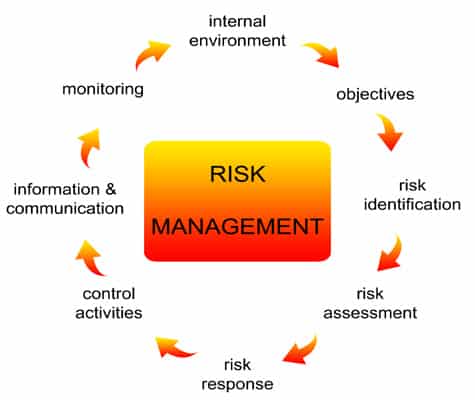Risk management has become imperative at every stage of the business. It is instrumental in helping enterprises avoid not only hefty penalties but also safeguard their reputation. Although companies are not new to risks and their management, it has gained prominence as a fundamental tool for effective business management in recent times. Organizations have to give great focus to risks related to health, safety, manufacturing quality, and environmental protection. Partly, also because the government has made it mandatory for a few sectors.
In light of this, compliance lawyers are now at the core of an organization’s smooth functioning, making a huge difference in the way multinational conglomerates conduct business. With their deep understanding of legal aspects and their repercussions, they are the best at assessing risks and offering advice on mitigating those risks.
In this article, we have outlined everything there is to know about risk management for compliance lawyers.
Contents
What Is Risk Management?
Risk management has been subject to repetition ad nauseam at every compliance conference, and for good reason. In simple terms, risk management is a set of activities that ensures that an organization is in adherence to the prescribed rules and regulations. It includes identifying and assessing possible risks and opportunities. More than anything, it involves identifying the possibility of an event that may impact a business negatively.
As the next part of this process, lawyers also advise their companies to select the best possible route to optimize their business results.
Is Risk Management A Legal Requirement?
Any business that employs people becomes directly liable for the health and safety of its employees. The business in question must bear the responsibility of safeguarding the interests of other stakeholders as well.
Moreover, it also has to ensure that nobody in the organization takes the illegal route to make profits or cause harm.
In the US, The Federal Sentencing Guideline, the Resource Guide to the US Foreign Corrupt Practices Act, and the OECD Good Practice Guidance mandate risk assessment as necessary for organizations. While risks can be of several types, lawyers are expected to take care of compliance risks. It is the risk of breaching laws, financial risks, or the loss of reputation that may occur due to non-compliance.
This disregard for rules can be accidental or intentional and may relate to laws of the land, internal policies, or best practices.
What Are The Key Steps In Risk Management?
For any compliance lawyer to effectively manage risk, following these steps is imperative.
Assessing The Internal Environment
The lawyer must be aware of the existing internal environment. There should be an understanding of the risk perspectives of the business owners and those of the board. It will help to understand the ethical values and the views on integrity to set the course. Moreover, lawyers should also develop an understanding of the risk appetite of senior management. It will help in classifying different types of risk to take corrective actions.
Objective Setting
The internal checks for compliance and risk control should be in line with the organization’s mission and goals. In the beginning, lawyers can start by understanding the controls that are in place to minimize compliance risk. At times, the controls are present but are not checked periodically. In such scenarios, risk controls are as good as being non-existent. It is also crucial that these risks are included in the internal policies and processes to ensure an organization-wide focus on risk.
Risk Identification
Events, both internal and external, come in the organization’s way of staying compliant. The compliance lawyers should encourage the other departments to identify risks in their areas. As they do, it is also advisable to ask them to state the potential consequences of these risks. After this process, you will receive a list of the potential risks that may include human rights, export control, intellectual property rights, privacy, counterfeiting, etc.
Once you develop an understanding of these events, it will become easier to define your risk assessment and response more accurately. Attending external events such as a conference can give a view of what other organizations are doing. It is like benchmarking your internal practices against widely-accepted best practices.
Risk Assessment
This process starts with evaluating the risks that come with the business. These could either be inherent or residual risks. Traditionally, risk assessment was all about auditing the financials of the company on a pre-decided timeline. The errors that would be discovered would get rectified, and it was a common understanding that people were the main source of those errors.
However, in the current times, it has become much more detailed and is a continuous process. The controls are deeply embedded in the functioning of the organization. Moreover, every department is involved in it, and processes are improved to eradicate errors from the system.
Risk Response
Depending upon the priorities, the next step is to identify the risks that need treatment. While a few risks need mitigation, others may be acceptable in the current scenario. The risk appetite of management is a crucial aspect to consider while making this decision. It mainly depends on things like the industry and the position that the company chooses to take toward managing the risks.
With this knowledge, enterprises can decide whether the risk should be avoided, accepted, shared, or reduced.
Control Activities
Once you know the course of action for the existing risks, you will have to propose process controls to ensure the desired results in the future. For instance, if you feel getting insurance will help you reduce your liability, ensure that you get it. Furthermore, set an automatic response system to renew it every year. Internal communication is also crucial to ensure that the organization knows what is the compliance team doing. For this purpose, a compliance newsletter can deliver the desired results.
Conclusion
Lawyers play a central role in ensuring compliance with the laws and regulations. In current times, it has become a necessary requirement for most entities. Even if it is not laid down in the strategic objectives of the entities, it is enforced by the regulators.


